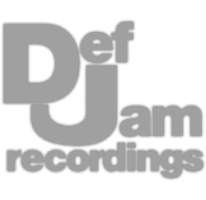Professional Analog Mastering.
Professional Analog Mastering.










JS Inflator is the Oxford Inflator. It’s a 1:1 remake that even adds some additional functionality to the original plugin like oversampling and fixed latency or linear phase processing.
I’m a huge fan of the original and this remake - it wave shapes from lower amplitude aspects of the waveform. In this way, it retains the original timbre of the signal by leaving peaks alone.
Meanwhile, it amplifies quieter aspects of the recording, which makes easily masked details much easier to hear and the overall signal sound fuller and more impressive.
When mastering, a higher curve value mixed with a moderate effect percentage brings up a lot of lower-level detail. Similar to how a limiter can push up quieter details, the inflator does the same without the need for a brick wall ceiling.
Additionally, mild harmonics are added to the signal, causing a full sound without significantly changing the timbre.
So, let’s take a listen to it, and notice how, just like the original inflator, it does a fantastic job of creating a louder sound without changing peaks.
Watch the video to learn more >
Wave Breaker is the best free limiter currently available. Even if you already have a limiter you like, maybe even one you’ve paid a lot of money for, I’d still recommend Wave Breaker as a fantastic, super clean alternative.
Most limiters don’t actually limit, or they do it poorly. They’re entire job is to avoid wave shaping while pushing the signal into a ceiling. When done properly, the timbre of the signal is retained, distortion is kept to a minimum, and you can achieve a louder sound without noticeable artifacts.
Most limiters end up clipping the signal, even expensive ones. This doesn’t mean they sound bad, just that it’s difficult to predict how they’ll behave unless you look behind the scenes.
Wavebreaker on the other hand does exactly what it’s supposed to.
The peaks aren’t shaped - instead, lookahead is used to determine how much peaks need to be turned down, and then clean gain is used to attenuate them.
Furthermore, the plugin’s response time is fantastic - large changes in amplitude are accommodated without significant amplitude modulation or changes to the ADSR.
If you want less distortion at the expense of slight changes to the ADSR, increase the preserve function. If you don’t mind some mild distortion, keep this at 0.
If you want some additional harmonics, introduce mild saturation with the saturation dial - when engaged the ceiling includes a soft-clipper.
Let’s take a listen to it greatly amplifying the signal. I’ll compensate for the gain so you can more easily hear how it affects the track other than its loudness.
Watch the video to learn more >
Attractor is a brand-new plugin that lets you process the attack and release of the signal separately. With it you can determine how much compression is introduced to either, if one section is saturated while the other isn’t, and so on.
I’m still experimenting with this plugin, but so far I’ve noticed that a mild amount of saturation and compression on the release side, mixed with a lower wet/dry ratio goes a long way when mastering.
It’s definitely more aggressive than a lot of the plugins on this list, but if used subtly it works really well on a stereo track.
Let’s take a listen to it - let me know what you think of this plugin. So far, I’m pretty impressed with what it does.
Watch the video to learn more >
Poortec, another plugin from Analog Obsession has quickly become one of my favorite EQs.
It works well, allows for a quick Pultec low end trick, and offers an enjoyable high-mid filter.
In short, I set the lows to either 20 or 30Hz, and boost the lows. Then, I cut to a lesser extent.
This causes the subs and lows to be amplified but introduces a cut to the low mids.
Subsequently, the lows are incredibly impressive and full, but the signal doesn’t become muddy since the low mids are controlled.
Then, if needed, I’ll boost a small amount of 3kHz with a broader filter size to add clarity. This is great if I want a master to have more lows, and if I want to bring the vocals forward by amplifying the 3rd formant with the bell filter.
Since you’ve probably heard of Fresh Air, I’ll include it in this section as well.
If I use it when mastering, super subtle settings are enough to brighten and amplify the high ranges of the mix.
The harmonics introduced are low in amplitude but dense enough to cover the noise floor while amplifying the high range.
Like the Pultec it is super simple to use and has a large impact on the sound.
Let’s listen to both Poortec and Fresh Air introduced one after the other and notice how they complement each other well.
Watch the video to learn more >
Last up before I show you a quick chain with these plugins, let’s talk about ZL Equalizer.
It’s a genuinely impressive free plugin, with Mid-Side filters.
I prefer to use this at the beginning of a chain, or at the end of it to balance the sound before processors or shape the sound after processing, respectively.
If you use it at the beginning of your mastering chain, I’d recommend cutting the side image lows with a HP, and a little of the low mids with a stereo bell.
Then, address any ranges as you see fit.
If I use it at the end of the chain, it varies a bit, but again I’ll typically cut the side image lows, since processing will cause variation between the left and right channels, reintroducing a lot of stereo low-frequency info.
Then, I’ll find an area in the mid-range, usually between 500Hz and 1.2kHz that could benefit from being a little wider. I’ll use a subtle bell on the side image to boost this area slightly.
The same could be done for air frequencies - just to add a little width to them. A subtle shelf will work well.
If you need some more vocals you could boost a little of 3-5kHz on the mid image, or, dip it if there’s too much and balance out the overall response with some more of the side image in that range.
The point is, that it’s a great alternative to the Pro-Q3, but keep in mind that it doesn’t offer linear phase.
So, let’s listen to these plugins introduced one at a time as a chain. I’ll show you the settings used, but keep in mind you’ll need to adjust for your particular mix.